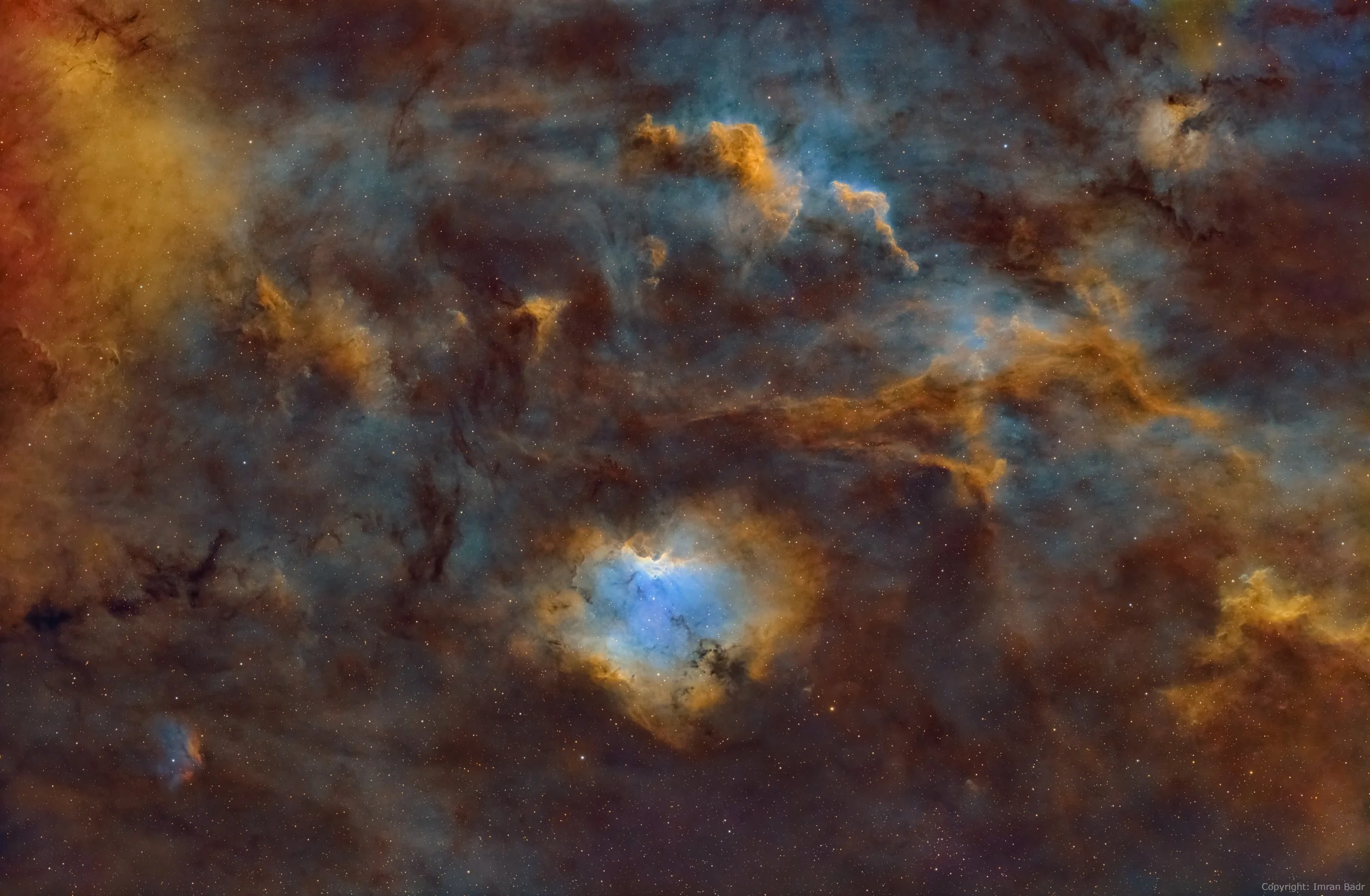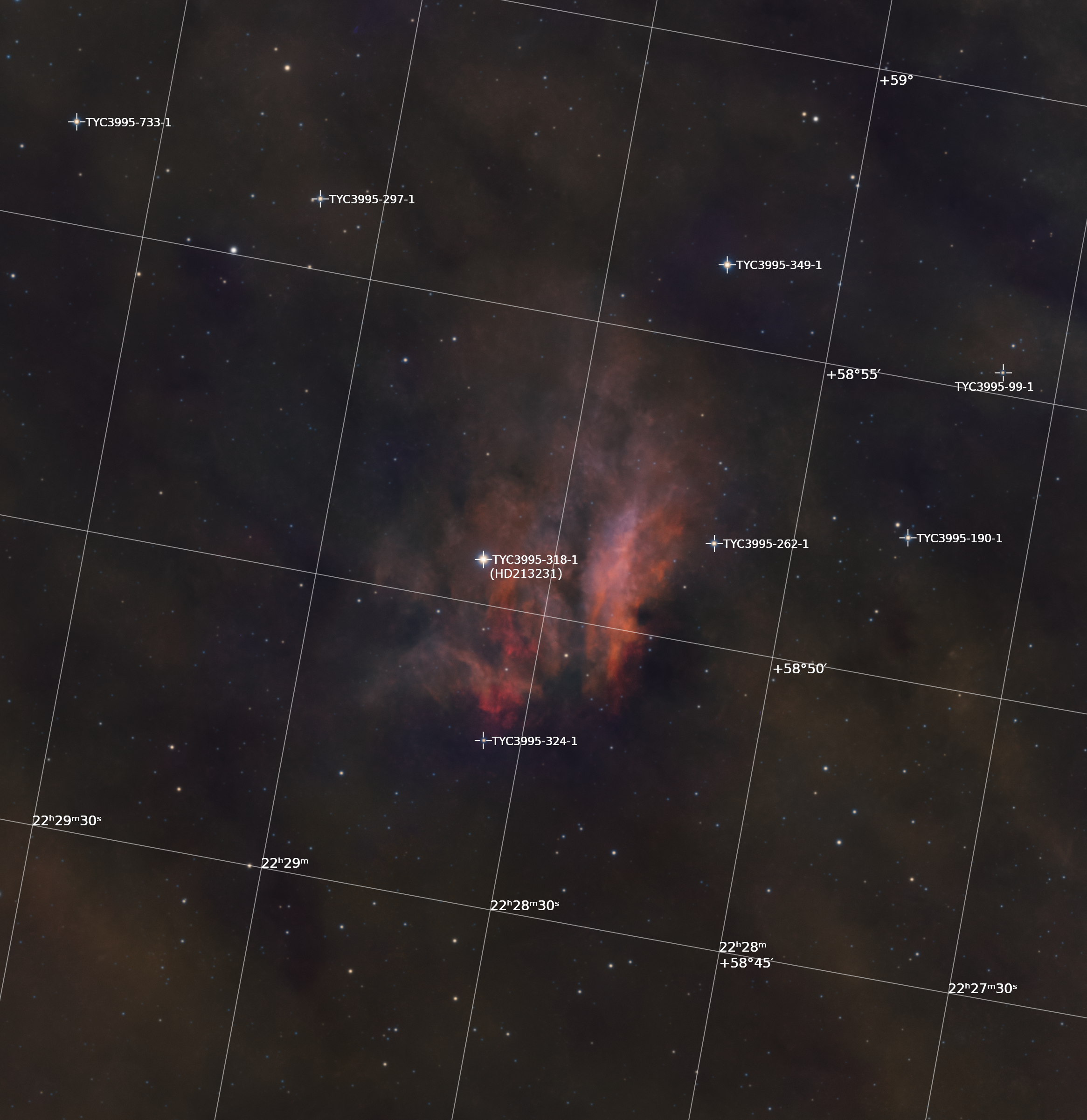
New discovery - Badr 1 nebula in Cepheus
In the quiet hours under suburban skies, sometimes the faintest glow tells an untold story.
Published by Imran Badr on Nov 07, 2025
The Discovery of the Badr 1 Nebula
A Faint Glow in Cepheus
In the summer of 2025, while imaging and progressively stacking the data of the region around the nebula Sh2-135 , I noticed something unexpected — a faint, soft patch of light that didn’t correspond to any catalogued object. At first, I assumed it was an artifact, maybe a reflection or a gradient. But night after night, across different filters, the feature persisted.
Using my Sky-Watcher Esprit 100ED telescope and ZWO ASI2600MM Pro camera, I gathered over 114 hours of narrowband data through Antlia 2.5 nm Hα, S II, and O III filters. When the channels came together, a subtle nebular shape appeared near HD 213231, a B-type star in Cepheus — a star with no previously known nebula near or around it. See the image and a nebula structure towards left-bottom.
Verification and Confirmation
To verify what I was seeing, I aimed my Celestron 9.25″ EdgeHD with a 0.7× reducer at the same coordinates and began a follow-up campaign.
Over several moonless nights, I accumulated an additional 44 hours of narrowband data: 10 hours of Hα, 24 hours of S II, and 10 hours of O III.
As I processed the new data, the structure revealed itself clearly — a compact emission nebula, rich in hydrogen and sulfur emissions, with faint oxygen traces.
The strong Hα and [S II] signals, combined with a high Hα-to-O III ratio, suggested a moderately ionized H II region, likely energized by HD 213231 itself.
Position and Scale
Center (J2000): RA 22 28 30.57 Dec +58 50 52.78
Apparent Size: ≈ 6.5′ × 3.5′
Associated Star: HD 213231 (B8 Ve)
Faint traces of the same structure appear in the Digitized Sky Survey (DSS) when viewed in Aladin Lite using a square-root stretch — supporting the conclusion that this is a genuine, previously uncatalogued emission nebula.
From Backyard to the Literature
Encouraged by these results, I compiled the data and submitted a report to the American Astronomical Society’s Research Notes.
In November 2025, it was accepted and published as:
“Discovery of an Uncatalogued Emission Nebula Around HD 213231 in Cepheus.”
AAS Research Notes, Vol. 9 (2025)
DOI 10.3847/2515-5172/ae1c1a
I have informally named this object the Badr 1 Nebula.
Equipment and Acquisition
Dates: Oct, 2025
Telescopes:
Celestron 9.25 EdgeHD
Mounts:
Sky-Watcher EQ6-r pro
Camera:
ZWO ASI2600MM Pro
Filters:
Antlia 2.5nm S,H,O
Exposures:
Ha: 10h (600s exposures)
S2: 24 hours (600s exposures)
O3: 10h (600s exposures)
Total Integration: 44h
Software: PixInsight, Photoshop
Reflections:
It’s humbling to realize that even from a light-polluted backyard, there are still places in the cosmos waiting to be noticed.
The Badr 1 Nebula is a reminder that discovery doesn’t require a large observatory — only patience, curiosity, and the night sky.
114 hours SHO with RGB stars using Sky-Wtacher Esprit100ed, ZWO2600mm pro, Antlia 2.5nm S,H,O and Optolong R,G, filters
Badr 1 nebula plate-solved and annotated
DSS color image (stretched sqrt) shows faint diffused nebulosity around HD213231


